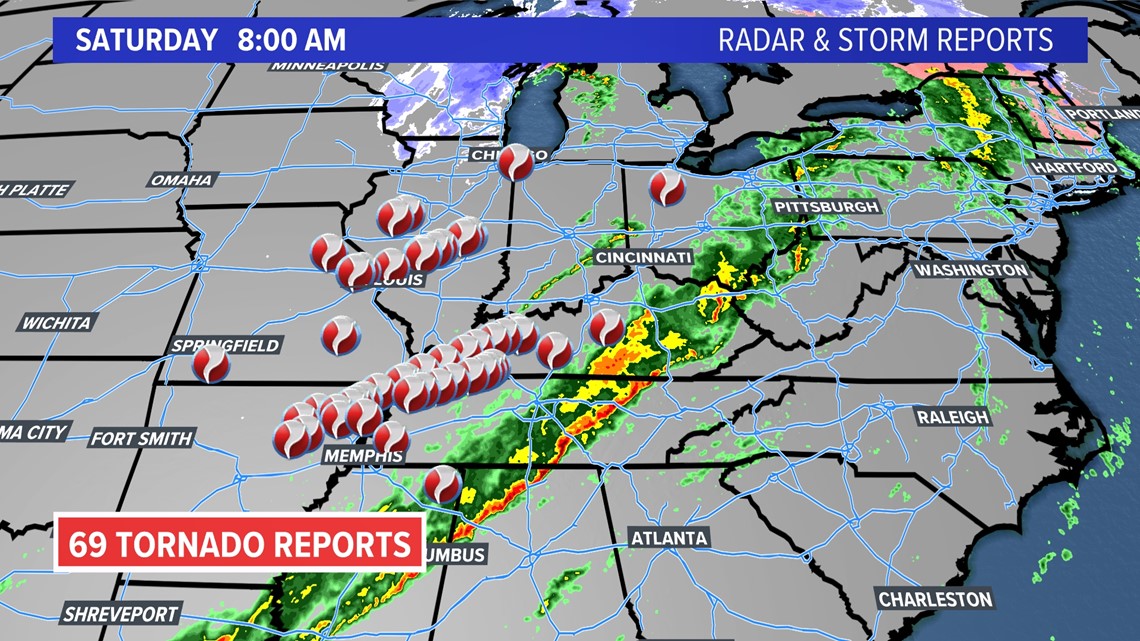CONNECTICUT, USA — It's been a very mild December in the eastern United States, and the weather leading into Friday's severe weather outbreak in the Midwest was very warm.
Severe thunderstorms are fueled by the clashes of air masses. In this case, warm air was surging north (Memphis hit 80 degrees on Friday), while winter chill was battling back south. Along this boundary, violent storms developed Friday night.
There have been nearly 70 tornado reports so far, and it's taking days for the National Weather Service to conduct complete damage assessments, due to the scope and length of the damage, affecting several states.


What caused such a violent outbreak of severe weather, in the month of December, no less?
It's a natural question, and there are some key atmospheric conditions that helped drive this outbreak.
The clearest is La Nina. It's the cold phase of the El Nino Southern Oscillation, when ocean water temperatures in the tropical Pacific Ocean are below average.


So, why does this matter?
The phase -- El Nino or La Nina -- impacts the large-scale weather pattern across the Northern Hemisphere.
During a La Nina winter, the jet stream generally flows in from the Pacific and lifts farther north through in the eastern United States, sending warmth north with it.
Severe outbreaks can actually be more common during La Nina winters in the Midwest and Mississippi Valley, due to this jet stream configuration.


There's been much discussion about climate change and this outbreak. To be clear, there is a lot we do not know about tornadoes and any impact of climate change.
It's an area of ongoing study and debate.
In fact, there's no long-term trend in the total tornadoes each year. Even including this outbreak, the number of tornadoes in 2021 is below the average number in the U.S. to date.


That said, a warmer than average Gulf of Mexico likely fueled this weather system, and that is connected to our changing climate.
Sea surface temperatures here have been much above average, even at record levels through the fall. A warmer flow in from the south off of the Gulf of Mexico adds even more moisture and energy to an already charged-up weather pattern.
Given this outbreak happened in the middle of December, it's reasonable to suggest climate change is making events like this more favorable later in the year.


To a much smaller scale, we may be experiencing similar shifts in our severe weather season in southern New England.
Severe thunderstorms and tornadoes have been recorded both earlier and later in recent years.
Four small tornadoes hit Connecticut in mid-November. One hypothesis is this was also fueled by record warm ocean water temperatures south of New England, in a pattern that would be more typical of September than November.


----
Have a story idea or something on your mind you want to share? We want to hear from you! Email us at newstips@fox61.com
---
HERE ARE MORE WAYS TO GET FOX61 NEWS
Download the FOX61 News APP
iTunes: Click here to download
Google Play: Click here to download
Stream Live on ROKU: Add the channel from the ROKU store or by searching FOX61.
Steam Live on FIRE TV: Search ‘FOX61’ and click ‘Get’ to download.

